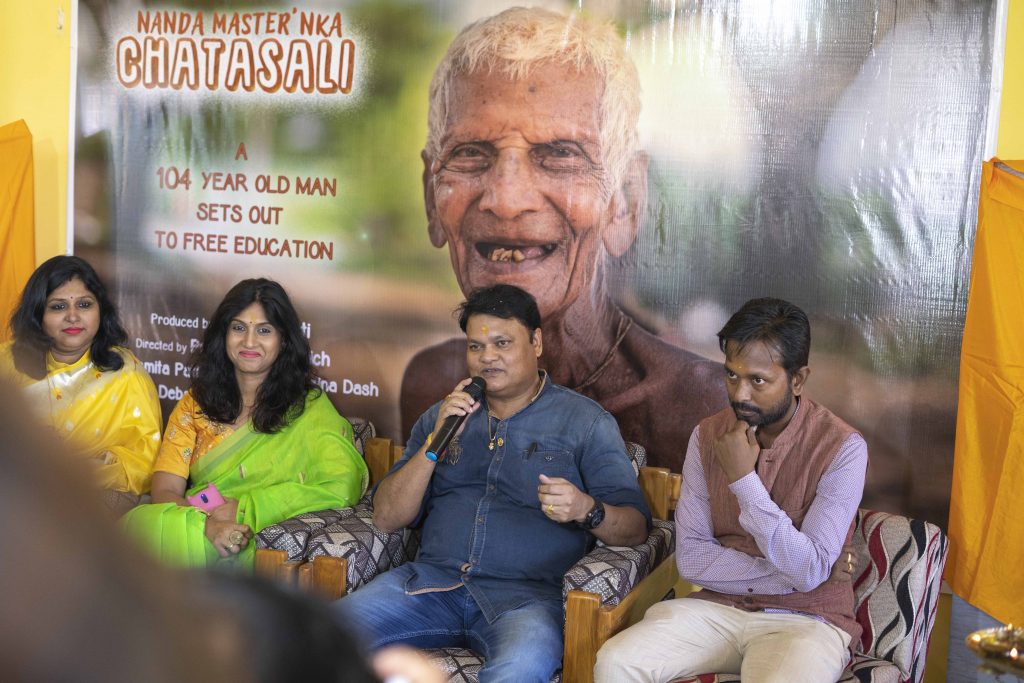Honoured with about 30 national and international awards for his documentary films, Pranab Kumar Aich is a known face of Indian cinema, especially in festival circuit. Aich, an alumnus of Jamia Millia Islamia University, was shot to fame after winning the coveted Sony World Photography Award for his work on environmental changes. He has so far directed 60 documentaries and as many photo stories. His short films City’s Step Child and The Dump Hill Dreams have been screened at many national and international festivals and appreciated. A documentary on children working in the landfills of India is a milestone in his career, says the filmmaker. His other films like City’s Step Child and I Have a Coloured Dream have fetched him quite a few international awards. Most photo stories and documentaries he has made so far, highlight issues like climate change, plight of slum children and marginalised women and the present state of education. Pranab was recently in the news for launching a film on 104-year-old Nanda Kishore Prusty aka Nanda Mastre, who was recently given a Padma Shri for running a Chatasali (a non formal primary school) for the last 75 years. The prolific filmmaker, the first Indian to bag an award at Cannes Film Festival for photography, took some time off from his schedule and spoke to Sunday POST on the most important project of his career and other issues.
You have recently finished shooting for the documentary film on Padma Shri nominee Chatasali teacher Nanda Sir. Please elaborate a little more on this project?
Ans: Centenarian Nanda sir, the oldest teacher of Odisha, had created a free learning space for local kids in 1946 and hasn’t stopped since. It was his unwavering enthusiasm for educating the poor that inspired me to record his works. It’s not just a film but a precious document concerning an education icon. The film portrays him as an ambassador of change and a saviour of our age old culture. The film will be sent to international film festivals and released on a major streaming platform. I am happy that popular TV and film actress Naina Dash has come on board as an associate producer for the film.
What are the other highlights of the film and what is your expectation from it?
Ans: The film addresses quite a few issues – education, children and culture – of which I am passionate about. When producer Abhay Pati approached me to make a film on Nanda Sir, I didn’t even have a second thought before giving a nod. I felt the story of such a simple, committed and average man should be told to the entire world and the global audience must know about Odisha through this film. I have collaborated with many international agencies in the past but this biopic is closest to my heart. In today’s world, it is difficult to find an old man who lives in just a pair of clothes but has been providing free education to the poor for more than 70 years. I hope that this movie will strike a chord with film lovers. Nanda sir’s journey to Rashtrapati Bhawan to receive Padma Shri is also part of the film for which we took permission from the Home Ministry.
How did you get attracted towards filmmaking?
Ans: It’s a long story. As kids, my cousins and I were not happy with the conventional storytelling of Odia cinemas. So, I wanted to change the narratives. As a child, I organised video shows at my village on a black and white TV. Gradually, I started loving films based on social issues. This led me to work in NGOs like Goonj where I got the opportunity to work on development issues alongside the inspirational Anshu Gupta. He asked me to make documentaries and my first documentary Pratibimba was made in 2008. Incidentally, it was sponsored by Goonj. To my surprise, it was liked by all who mattered. From 2008, I started making documentaries and photo stories for national and international organisations like the UN Women, Bernard Van Leer Foundation, Humara Bachpan campaign, Public Health Foundation of India, Sahitya Kala Parishad, Adobe Youth Voices and the American India Foundation. As a documentary filmmaker and photographer, I always seek to unravel the multiple layers of reality rather than creating fictional landscapes and characters. And I think documentaries suit my artistic sensibility best.
How tough was it to make a documentary film at the beginning?
Ans: I didn’t study filmmaking but photography, never assisted anyone, so learnt through experience. I had no one to collaborate with, so I learned every aspect of filmmaking to give justice to a project. This turned out to be a blessing in disguise.
How does a documentary film make an impact on society?
Ans: Documentaries are real stories, made on the lives of real heroes or a real issue. They help the future generations to learn in detail about a certain era. I wanted to make social contributions and therefore decided to highlight social maladies through documentaries and photo stories.
You could have sent the message to society through mainstream movies. Why did you choose documentary films?
It is a common perception among average filmgoers that the actors are the heroes which is not true at all. So, I want to tell real stories with real heroes who can inspire generations to come.
Whom do you attribute your success to?
Ans: I would like to owe my success to Hollywood filmmaker Sharat Raju apart from cinematographer Andre Lascarl. I had an interaction with the two in 2008 which helped me shape my career.
What is the future of Indian cinema, specifically in the context of documentary filmmaking?
It looks promising. It’s growing rapidly due to the presence of streaming platforms.
Rashmi Rekha Das,OP
